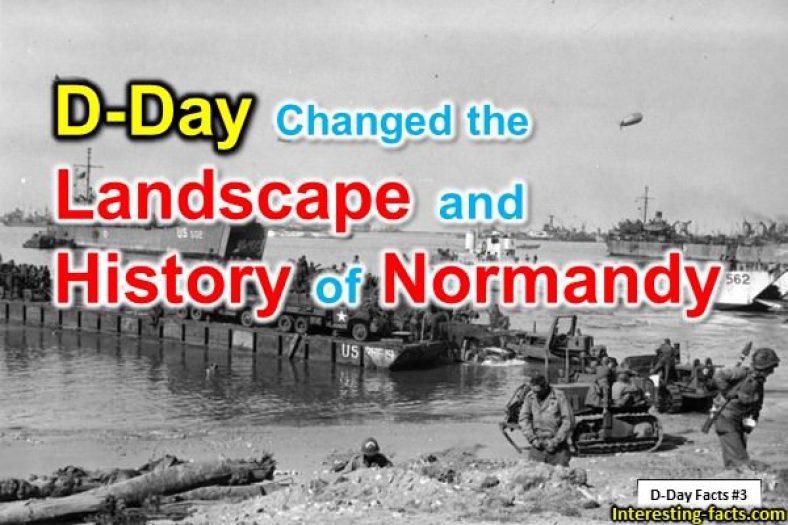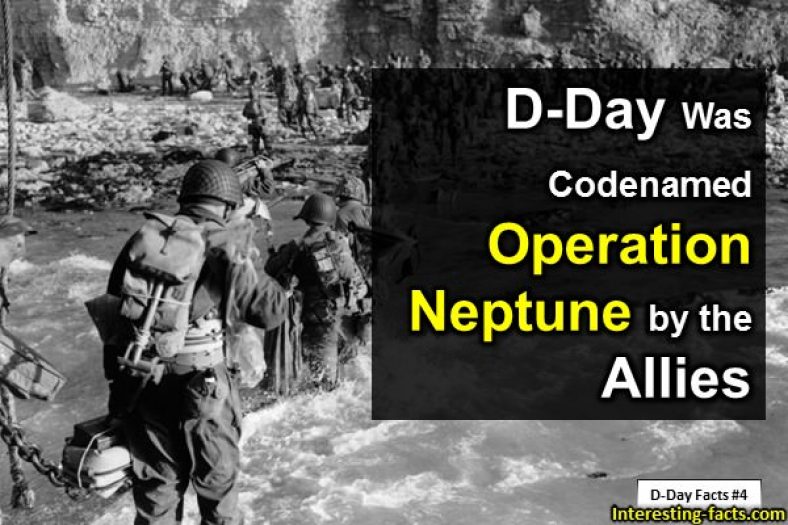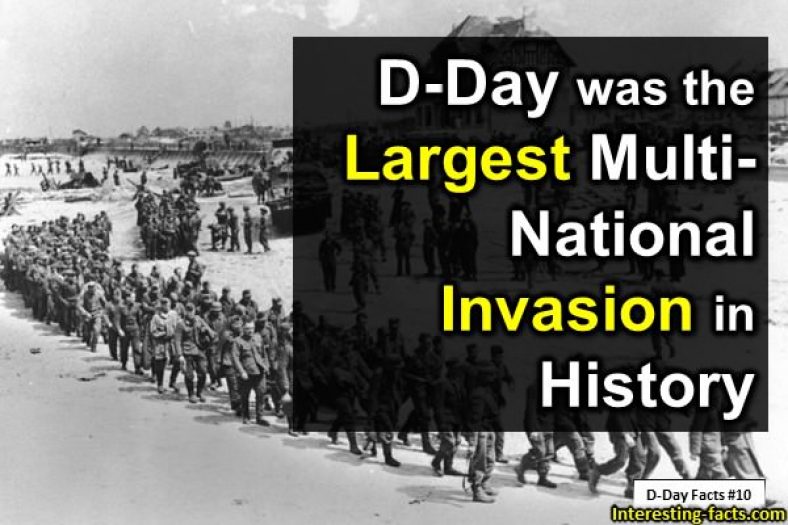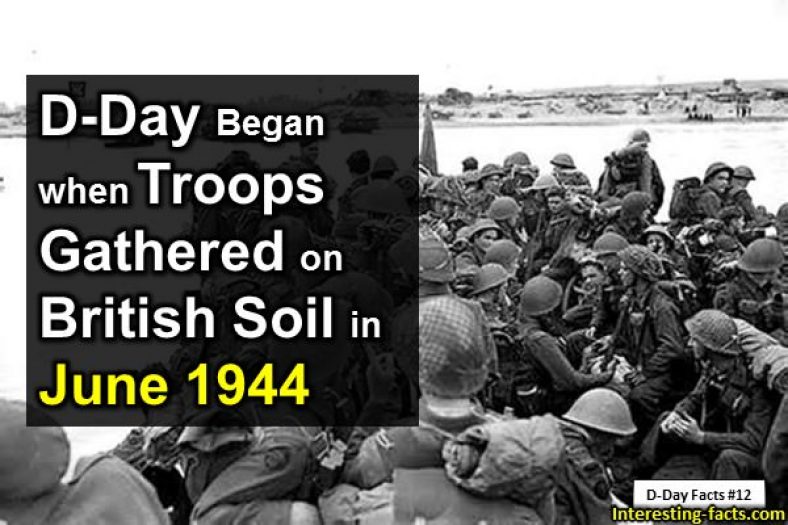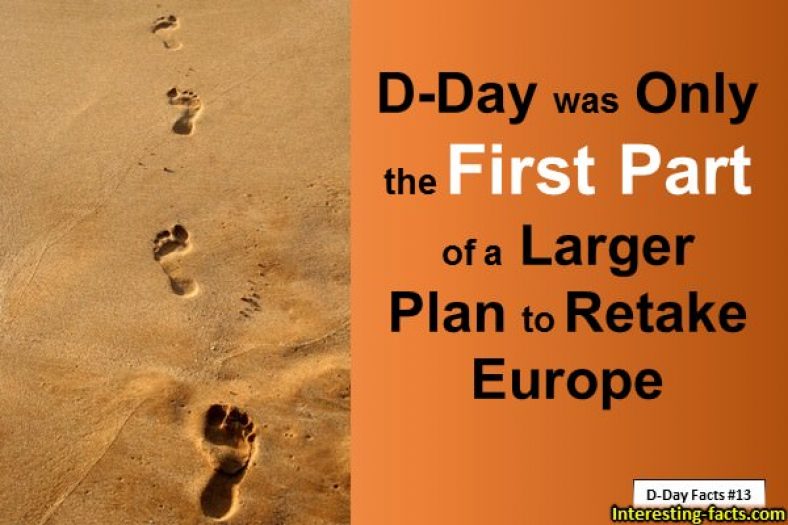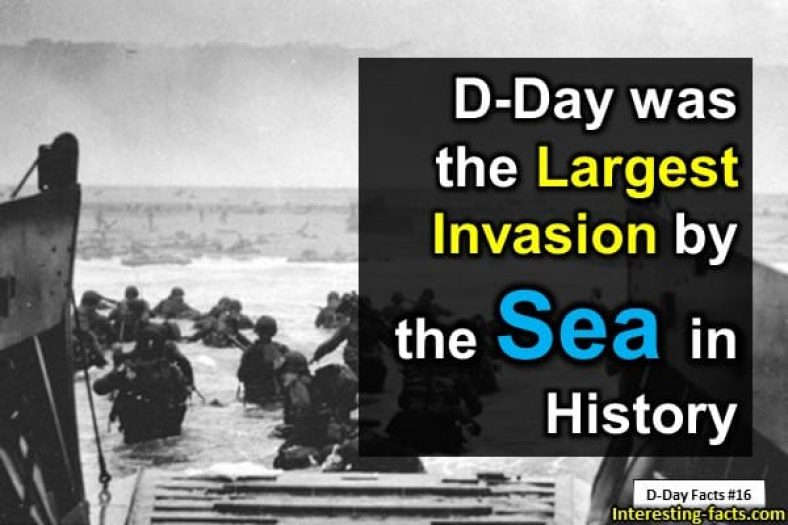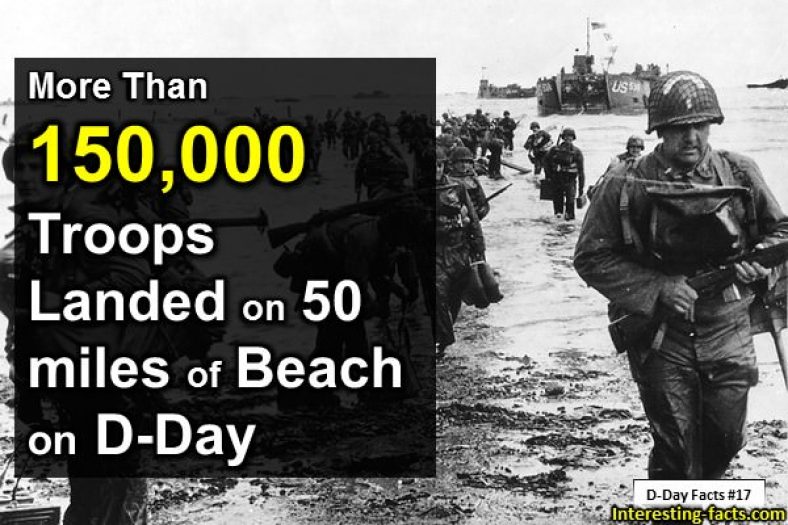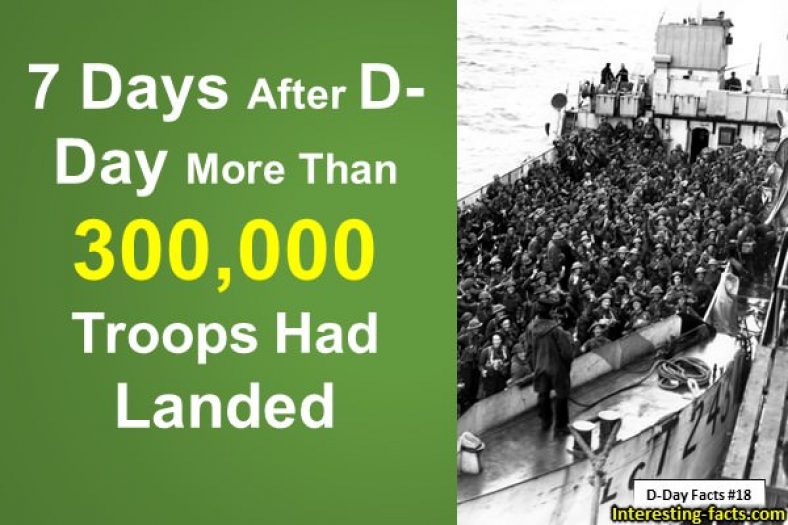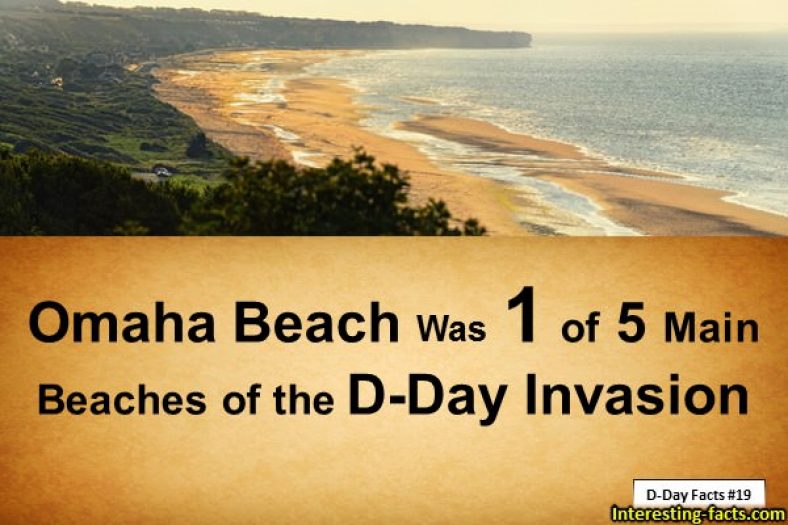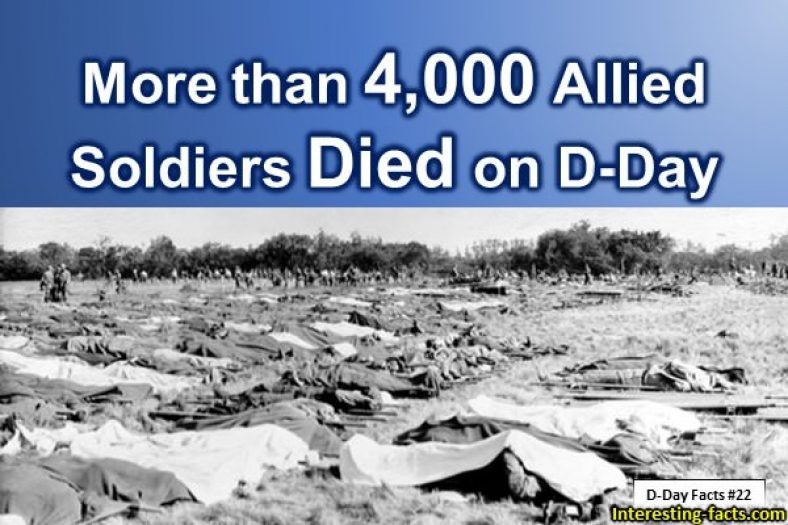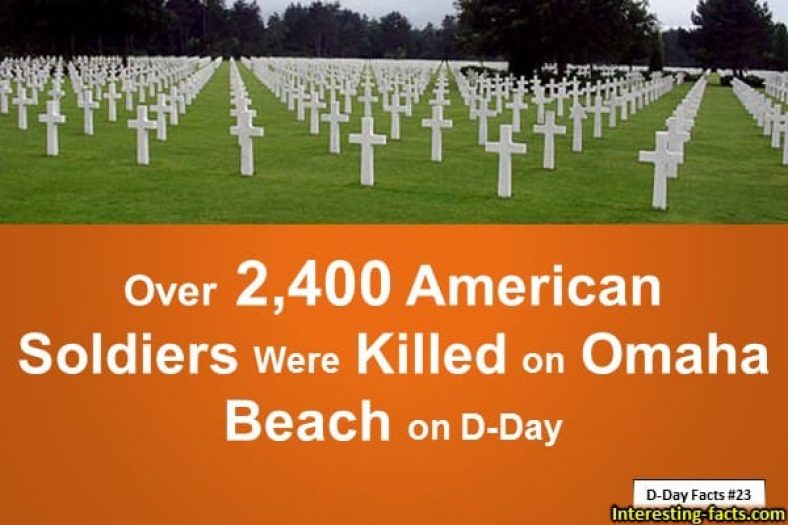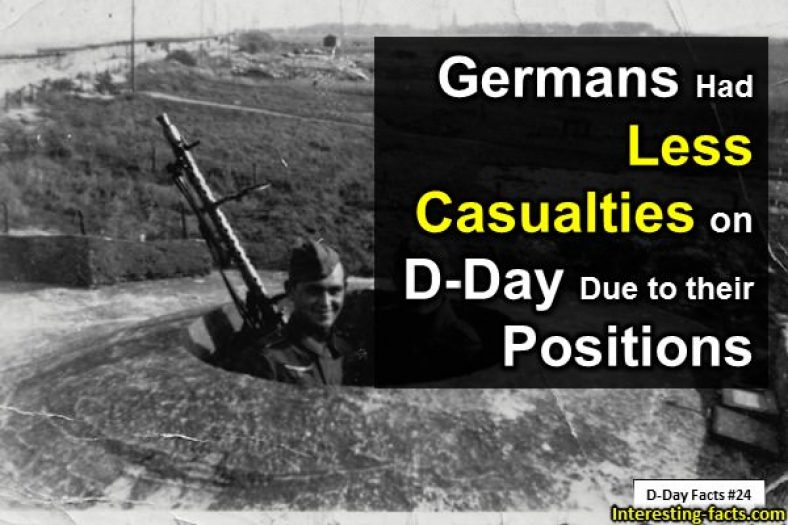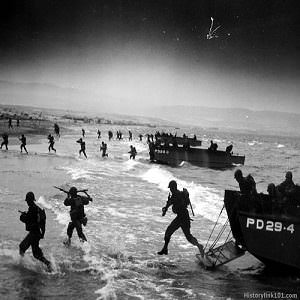D-Day Facts – Top 24 Facts about D-Day Invasion
The First D-Day Happened in the early 1900’s
The term D-Day is a generic term used by the military since the early 1900s to describe the date a combat operation takes place. Because of the monumental nature of the Allied invasion of Normandy, that day on June 6th 1944 became legendary. Ever since, people have been fascinated by D-Day facts, and the term D-Day for most people now means the date in history when the Allies started to win the war in Europe.
back to menu ↑D-Day Could Have Happened A Day Earlier on June 5th, 1944
D-Day was actually supposed to happen the day before, on June 5th 1944. However, because of bad weather, it was decided that the D-Day invasion would take place the following day, on June 6th.
back to menu ↑D-Day Changed the Landscape and History of Normandy
The D-Day invasion took place in a coastal area of France, known as Normandy. Despite the region’s rich history, it is now most famously remembered as the scene of this bloody invasion
back to menu ↑D-Day Was Codenamed Operation Neptune by the Allies
The codename for the Normandy Landings was Operation Neptune. Neptune is the Greek god of the sea, and it’s a fitting name, considering the invasion was launched from the sea.
back to menu ↑German Troops Didn’t Leave the Islands Around Normandy until 1945
Although the Allies were successful in their invasion of Normandy, it was nearly a year later, on May 9th 1945, that the entire German occupation of Normandy, including the surrounding islands, was completely ended.
back to menu ↑Operation Bodyguard Was a Fake Allied Operation to Hide D-Day Plans
In order to deceive the Germans, the Allies created a fake operation, Operation Bodyguard. This way, the Germans would not be sure of the exact date and location of the main Allied landings.
back to menu ↑There Were Multiple Fake D-Day Plans
There were actually multiple fake operations designed to deceive the Germans. These included fake operations detailing attacks to the north and south of the actual landing points in Normandy. Some efforts were even made to make the Germans think that the attack would take place in Norway!
back to menu ↑Normandy Was a Tourist and Resort Area Before D-Day
One of the lesser-known D-Day facts is that the beaches of Normandy were a popular destination for visitors to the Atlantic coast before World War II. From the 1800s onwards, Normandy was a popular seaside tourist area. There are still many beautiful towns and resorts on the Normandy coast.
back to menu ↑D-Day Was Planned for a Full Moon To Give Aircraft Better Sight
The Allies wanted a full moon to provide better sight for their aircraft. They also wanted to have one of the highest tides. The invasion was carefully scheduled to land partway between low tide and high tide, with the tide coming in.
back to menu ↑D-Day was the Largest Multi-National Invasion in History
The Normandy Landings known as D-Day were a multinational effort, with many countries involved. The Allied forces invading Normandy included troops from the United States, Britain, Canada, Poland, France, and more countries.
back to menu ↑The Allied Forces Were 5 Years Younger than the Germans on Average
Many D-Day facts focus on the armaments each side had during the invasion. A lesser-known fact is the age of the German and the Allied forces. The German forces, due to heavy losses on the Eastern Front, no longer had a large population of young men to enlist. German soldiers were, on average, more than 5 years older than their Allied counterparts.
back to menu ↑D-Day Began when Troops Gathered on British Soil in June 1944
A lot of D-Day facts focus on Normandy, where the Allies landed. A commonly asked question is “where did the Allies launch their invasion?” The Normandy landings were conducted from across the English Channel, with troops first gathering on British soil before launching the attack on that fateful day in June 1944.
back to menu ↑D-Day was Only the First Part of a Larger Plan to Retake Europe
The D-Day invasion, codenamed Operation Neptune, was part of a larger plan to take the European continent back from the Germans. Operation Overlord was the name assigned to the large-scale plan, and Operation Neptune was the first phase of the plan.
back to menu ↑The Draft of the D-Day Plan was First Accepted in 1943
Planning for the D-Day invasion began long before the event actually took place. Historical D-Day facts reveal that an initial draft of the invasion plan was accepted at a conference in August 1943.
back to menu ↑British General Bernard Montgomery Helped Eisenhower Plan D-Day
While a lot of D-Day facts focus on the numbers of ships, troops and military armaments, one fact that is often overlooked is the number of generals who planned the invasion. There were two generals: United States General Dwight D. Eisenhower and British General Bernard Montgomery planned the attack. It should be noted that Eisenhower was the Commander in Chief of Operation Overlord.
back to menu ↑D-Day was the Largest Invasion by the Sea in History
Eisenhower and Montgomery reviewed the initial plans for D-Day and decided that a larger-scale invasion would be necessary. The goal of the Allies was to allow operations to move quickly, and to capture ports that were strategic to the overall plan of retaking the European continent.
back to menu ↑More Than 150,000 Troops Landed on 50 miles of Beach on D-Day
It may be the epic scale of the D-Day invasion that explains just why people are so fascinated by D-Day facts. It was one of the largest single military operations of all time, with more than 150,000 troops landing on five beaches in just a 50-mile stretch of land.
back to menu ↑7 Days After D-Day More Than 300,000 Troops Had Landed
The first set of troops landing at Normandy signaled only the beginning of the invasion. Within seven days, the beaches where the Allies landed on D-Day were fully under their control. Get ready for some more massive D-Day facts! By that time, more than 300,000 troops, 50,000 vehicles and over 100,000 tons of equipment had been brought through the beaches of Normandy! By the end of June 1944, the Allies had brought over 850,000 troops through the beaches of Normandy and ports that had been opened up as a result of the D-Day invasion.
back to menu ↑Omaha Beach Was 1 of 5 Main Beaches of the D-Day Invasion
The Allies divided the 50 miles of the Normandy coast into five beaches, or sections. The beaches at Normandy were named: Utah, Omaha, Gold, Juno and Sword.
back to menu ↑Weather Delayed the D-Day Invasion by 1 Day
Many military historians who are interested in D-Day facts discuss how the weather impacted the D-Day invasion. In addition to delaying the invasion by one day, the weather blew the boats of the Allies east of their planned landing targets. This was especially true for the Utah and Omaha beach landing targets.
back to menu ↑The Terrain of Omaha Beach Caused the High Number of Casualties
Omaha Beach was one of the areas where the Allies suffered the most casualties. The geography of the area played a role in the high number of casualties at Omaha Beach. High cliffs that lined the beach characterized the geography of the Omaha Beach landing target. Many American forces lost their lives because the Germans had gun positions on these high cliffs.
back to menu ↑More than 4,000 Allied Soldiers Died on D-Day
The saddest D-Day facts are the number of people who were injured, and the number of people who died, as a result of the invasion of Normandy. Due to the position of the German forces and the defenses they had built, the Allies suffered over 10,000 casualties, with over 4,000 people confirmed dead.
back to menu ↑Over 2,400 American Soldiers Were Killed on Omaha Beach on D-Day
D-Day facts reveal that over 2,400 Americans were killed or injured on Omaha Beach. This was as a result of the geography of the Omaha Beach landing target, and the weather that had blown the ships off their target. The weather had also led to the sinking of some tanks which were intended to provide support for the troops landing at Omaha Beach. The high number of casualties at Omaha was also in part due to the lack of artillery providing reinforcements for the troops.
back to menu ↑Germans Had Less Casualties on D-Day Due to their Positions
Due to their positions, the Germans suffered fewer casualties than the invading Allied troops at Normandy. However, the Germans had no reinforcements to help them retake positions. Once the Allies had landed at Normandy, they took control of the beaches and continued until all of Europe was free.
The massive scale of the D-Day invasion and its important role in World War II make D-Day facts fascinating, even today. Many people lost their lives fighting on the fateful day of June 6th 1944. The
Normandy landings were the beginning of a larger plan to retake Europe and codenamed Operation Overlord. Had the D-Day invasion failed, the result of World War II may have been very different. Thankfully, despite a heavy loss of life, the Allies were ultimately successful in taking the beaches of Normandy and retaking Europe.
Facts about D-Day Invasion Summary
D-Day facts continue to fascinate people, even more than 50 years after the D-Day invasion took place. We gathered interesting facts about that fateful day on June 6th 1944, when the large-scale invasion of Normandy, France took place. D-Day marked a turning point in World War II and dictated the course of history.
Military historians are interested in D-Day facts because of the sheer scale of the invasion. The saddest D-Day facts are those relating to the losses the Allies suffered during the course of the invasion. The people who lost their lives on the beaches of Normandy did not do so in vain, as D-Day marked the beginning of the Allies retaking Europe.



